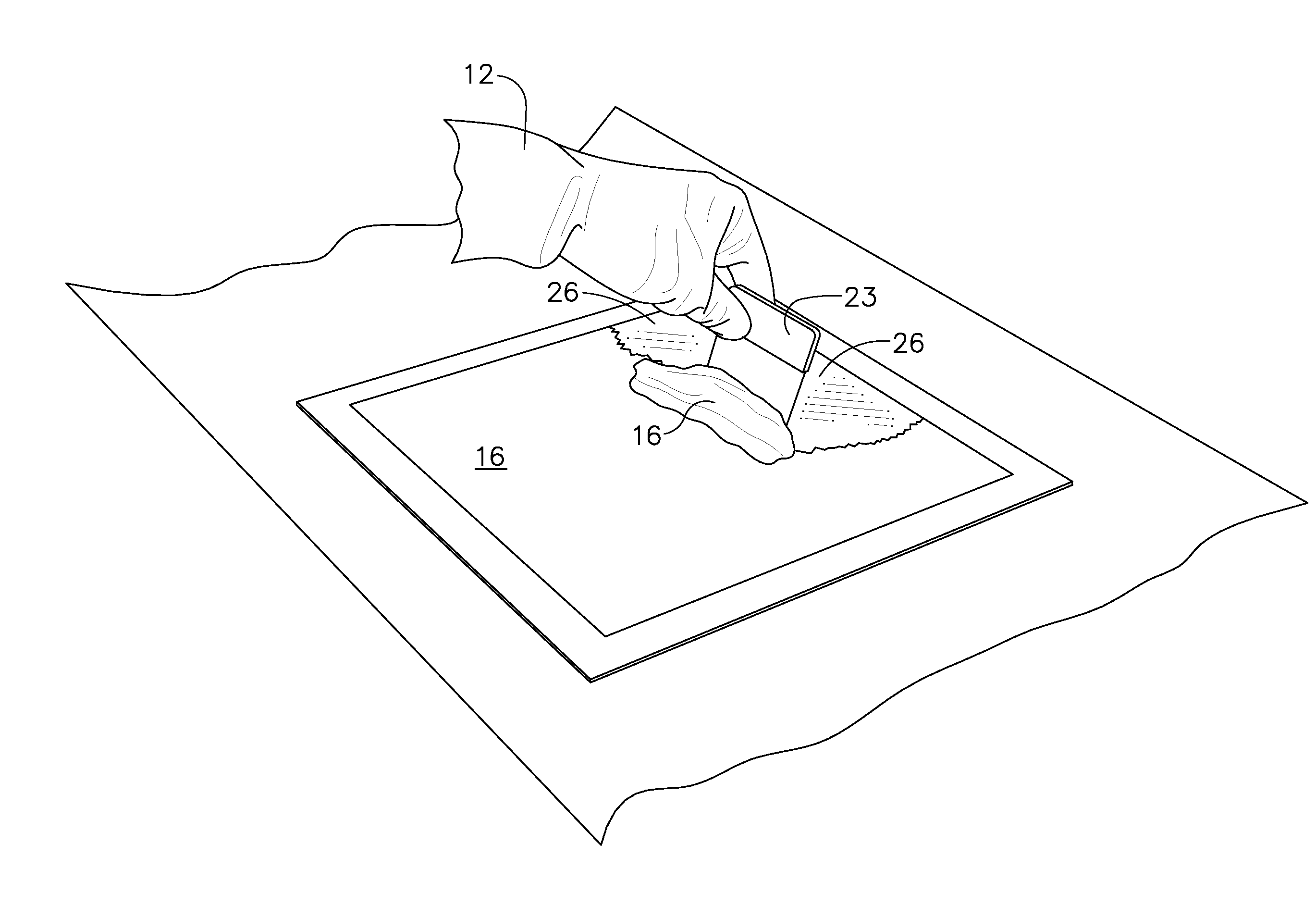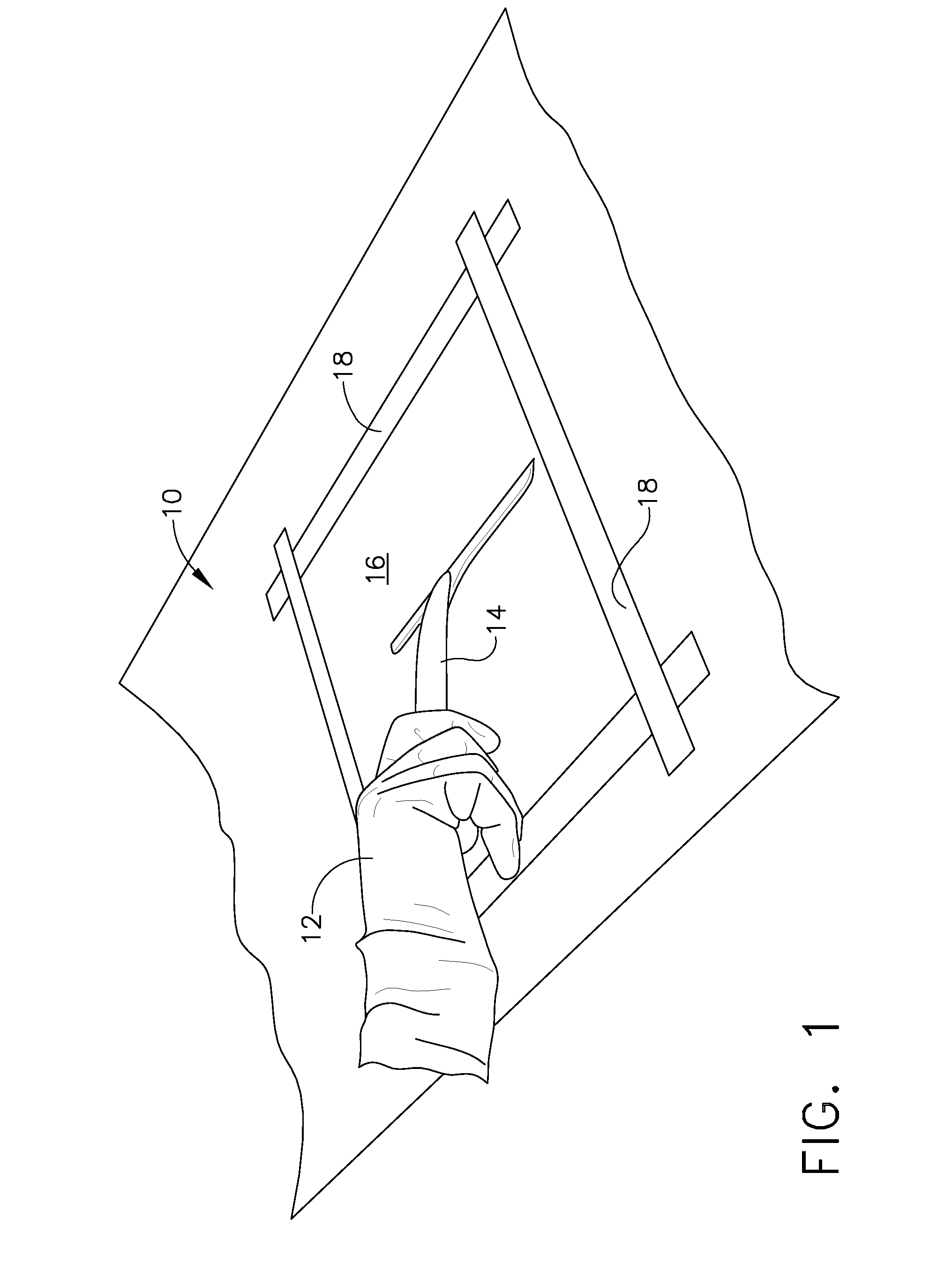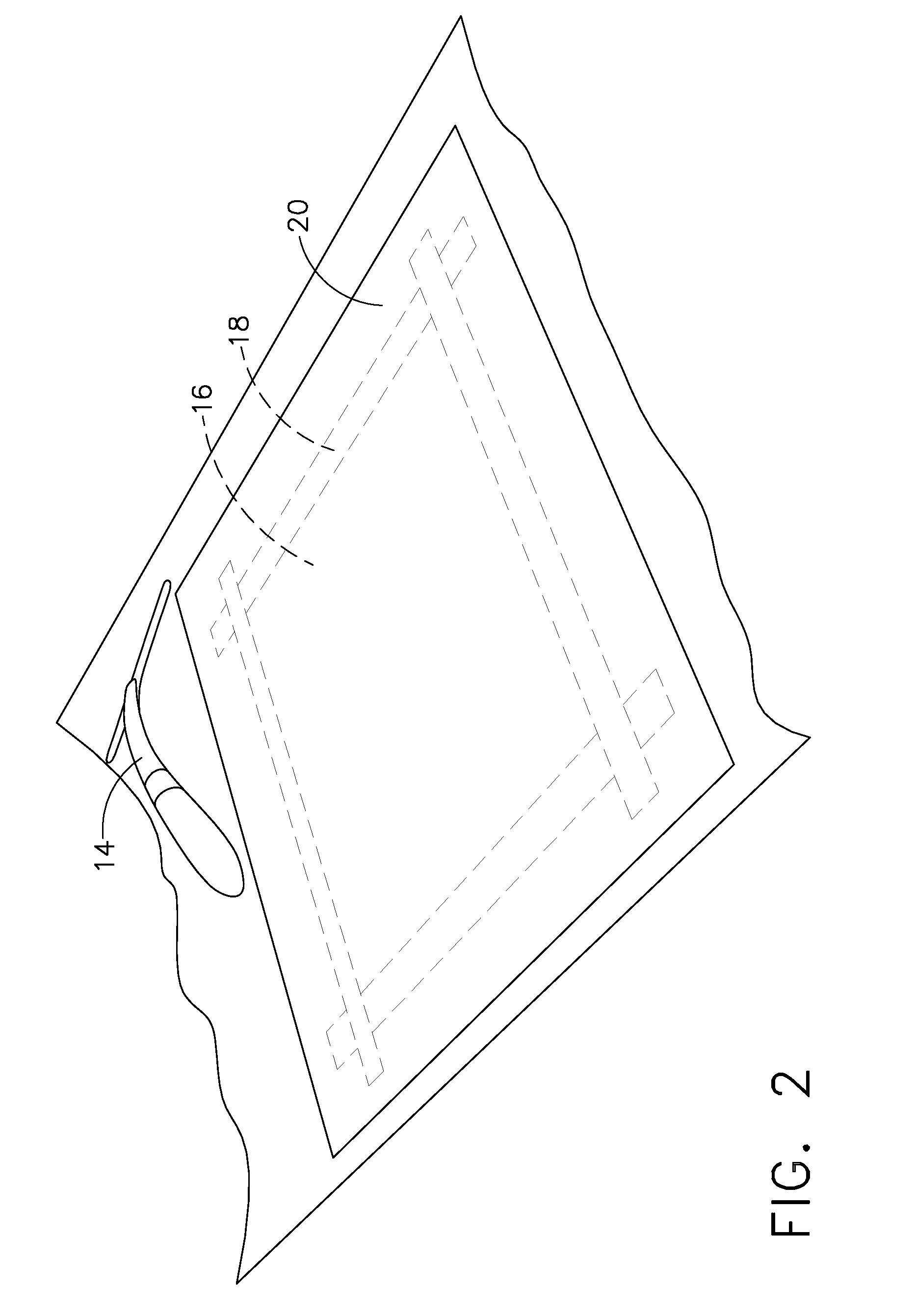Composition and method for removing adhesive residue
a technology of adhesive residue and composition method, which is applied in the direction of detergent dyes, detergent compounding agents, liquid soaps, etc., can solve the problems of time-consuming, expensive, inefficient, and environmental hazardous materials used in conventional methods for removing adhesive residues, and achieves cost-effective effects
- Summary
- Abstract
- Description
- Claims
- Application Information
AI Technical Summary
Benefits of technology
Problems solved by technology
Method used
Image
Examples
example 1
dhesive Remover Composition
[0035]The following components were mixed to produce an adhesive remover composition having a pH=7.6 (5% in water) and viscosity ≈700 poise:
RELATIVE AMOUNTCOMPONENT(by weight)isopropyl alcoholsilica, amorphous5–10%glycerinemethylpropyl ketoneabsorbable indicator dye other ingredients,including surfactant
example 2
dhesive Remover Composition
[0036]The following components may be mixed to produce an adhesive remover composition:
RELATIVE AMOUNTCOMPONENT(by weight)Food Coloring 0–.1Methylene Blue Chloride 0–.1D-Limonene 0–1.5Triethanolamine0–5Bentonite0–7Cellulose0–7Butyl Cellosolve 0–10Stearic Acid 0–10Talc 0–108-Hydroxyquinoline 0–.1Sodium Hydroxide 0–.1Potassium Phosphate 0–.1Dimethyl Glutarate0–5Dimethyl Adipate0–5Blue Food Color 0–.1Ethanol 0–30Isopropanol 0–50Fumed Silica (CARBOSIL ®)0–7JOY ® Dish Detergent0–3Saffranin 0–.1Pace B 820–5Methylene Blue 0–.1Diethylene Glycol0–7
[0037]CARBOSIL® is a trademark of Polymer Technology Group, Inc. (Berkeley, Calif.) for fumed silica. JOY® is a trademark of The Procter & Gamble Company (Cincinnati, Ohio) for liquid dish washing detergent compositions.
example 3
dhesive Remover Composition
[0038]The following components were mixed to produce an adhesive remover composition: 34 g silica, 25 mL glycerine, a trace amount of methylene blue, 20 mL JOY® liquid dish washing detergent, 400 mL isopropanol, 40 mL methylpropyl ketone, and additional isopropanol or silica to adjust viscosity to be able to apply with airless paint gun.
PUM
| Property | Measurement | Unit |
|---|---|---|
| viscosity | aaaaa | aaaaa |
| surface areas | aaaaa | aaaaa |
| thickness | aaaaa | aaaaa |
Abstract
Description
Claims
Application Information
 Login to View More
Login to View More - R&D
- Intellectual Property
- Life Sciences
- Materials
- Tech Scout
- Unparalleled Data Quality
- Higher Quality Content
- 60% Fewer Hallucinations
Browse by: Latest US Patents, China's latest patents, Technical Efficacy Thesaurus, Application Domain, Technology Topic, Popular Technical Reports.
© 2025 PatSnap. All rights reserved.Legal|Privacy policy|Modern Slavery Act Transparency Statement|Sitemap|About US| Contact US: help@patsnap.com



